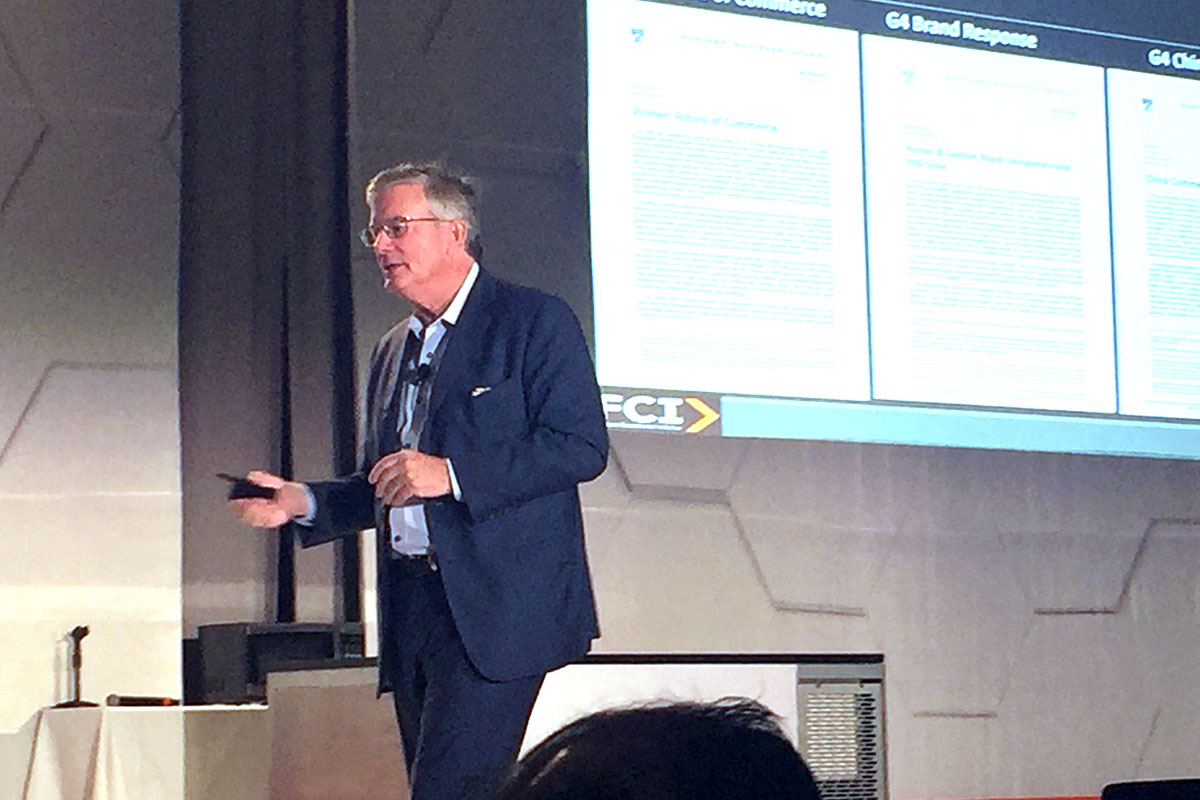CHICAGO — What is the future of commerce? What are the skills needed to move into the future of retail? These questions were introduced by Daniel O’Connor, a thought leader, adviser and educator, during his “The Evolution of Retail” presentation at Puratos’ Taste Tomorrow event, held May 1-2 in Chicago. And he answered these questions by explaining that the solutions revolve around a company realigning its capital, people and business model with the current “Generation 4” retail position.
But first one must understand the generations that came before this new reality. Generation 1 through 2 created value through convenience such as proximity and one-stops, lower prices, consistency and good service. Generation 3 brought lower prices, data review, transparency and digital options. The way these eras captured value was through gross margin, trade spend, marketing and new revenue streams.
Unlike previous periods, Generation 4 captures value through fees, global trade margins and some merchant margins. It creates value by providing even lower costs, global trade as a direct factory to consumers, integrated store networks, real-time data and new conversion models.

Mr. O’Connor used macro platform Alibaba, which powers a variety of retailers and production companies, as a Generation 4 model.
“This company is a multi-marketplace,” he explained. “Unlike Amazon that has really a single market — amazon.com — this is a market that has several amazon.coms and they’re all housed on a common platform.”
He continued, “Imagine entering into a business environment such as this one where every business is running off the same line of code. We’re not doing it differently in Belgium than we are doing it in Boston. We’re using unified code.”
This system allows for complete and real-time data, meaning businesses can mark analytics back to a consumer in the store. Instead of being dependent on merchandise marketing data, a company depends on marketplaces to get data quickly to every part of the business.
With the global convenience available through companies such as Alibaba, consumers can also receive their product in a short time period. Mr. O’Connor said some areas ensure a product can be found in every 30-mile radius.
What’s more is consumers can find everything on a single app — it’s one touch or click away.
“It’s all about getting on a platform potentially,” Mr. O’Connor said. “It’s a very big change in the way that companies source goods, in the way they operate their companies and where and what platforms they want to be on.”
Generation 4 brings an outlet for companies that can’t do it on their own, whether they don’t have the capital, the people or time to achieve success.
“You have to take a look at what you want to do,” Mr. O’Connor noted. “As you start to think about what the right scenario is for you, what I’d challenge you to think about is, is Amazon the destination? Is that it, or are we going to go beyond that? I’m here to say we’re going to go way beyond that.”




